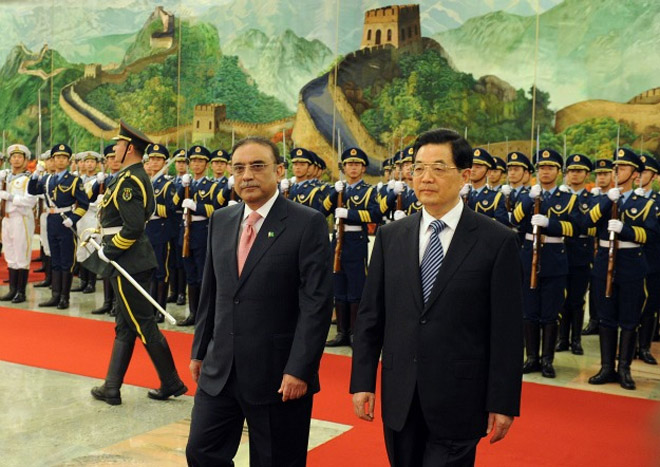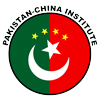Could Pakistan bridge the U.S.-China divide?
Source : FP Date : March 25, 2013
 |
As the Obama administration seeks to "responsibly withdraw" from Afghanistan by 2014, it must also retool its policy toward a more strategically important, nuclear-armed, and volatile Pakistan. Given U.S. engagement and leverage with Pakistan will only further decline, and its current single digit approval rating in Pakistan, it needs all the help it can get to contain a hydra of militant groups from tearing Pakistan apart or triggering a war with India. To the extent that external actors have a role to play in Pakistan's internal stability - the onus, after all, lies with its own leadership - the United States might find the most unlikely of partners in Pakistan's northern neighbor and "all-weather friend:" China.
Sino-Pakistan relations have consisted of four phases. After diplomatic ties were established in 1951, relations cooled as Pakistan sided with the United States against seating China in the United Nations. The 1962 Sino-Indian war and 1963 Sino-Pak boundary agreement cemented ties against a common adversary; China became and remains a vital source of military and nuclear technology for Pakistan. In the late eighties, a thaw in Sino-Indian ties - trade between the two rising economic giants is now six times that between China and Pakistan - and the spread of militancy into China's restive Xinjiang region from Pakistan diluted the relationship. Since 9/11, Chinese concerns about Pakistan's stability have only deepened with attacks on some of the 13,000 Chinese workers living in Pakistan.
Three lessons for the United States emerge from this narrative.
First, while China remains committed to Pakistan, especially to balance India, its position on Indo-Pak relations has shifted. From threatening intervention in the 1965 Indo-Pak war to former President Jiang Zemin urging the Pakistani Parliament to put Kashmir on the back burner and focus on development in the nineties, to the Chinese Vice Foreign Minister engaging in unprecedented shuttle diplomacy following the 2008 Mumbai attacks that nearly brought both sides to war, China is emerging as a key crisis-manager in South Asia - in large part to maintain regional stability for its own economic growth.
Second, despite these shifts, China retains a high favorability rating in Pakistan at 90%. Underpinning this credibility is China's perceived unstinting support vis a vis India and economic assistance, generally in the form of soft loans with no grating conditionalities, that have resulted in a range of prominent infrastructure and defense-related projects in Pakistan.
Third, China is increasingly focused westward. Since 2000, China's "Go West" policy has sought to tackle underdevelopment in its vast western regions, including Xinjiang. Pakistan can potentially provide an outbound route for goods from Xinjiang and an inbound maritime route through its struggling Gwadar port for an increasingly Persian Gulf-oil dependent China. Similarly, an influential essay titled "Marching West" making the rounds in China's policy circles argues for expanding ties with China's western neighbors. In contrast to a tense Pacific, China's west, the essay contends, is also fertile ground for Sino-U.S. cooperation, including in Afghanistan and Pakistan.
Given China's potential crisis-manager role in South Asia, its standing in Pakistan, and its concerns about militancy therein, China and U.S. interests seem to converge. This runs askance of the "string of pearls" theory that views Pakistan as a central element in China's evolving grand strategy in the Indian Ocean, potentially to U.S. detriment. Consider, however, the National Intelligence Council's Global Trends 2030 report. In one of four scenarios for the future of geopolitics it outlines, the optimal one is a "fusion" of Sino-U.S. interests - sparked by their jointly defusing a looming war between Pakistan and India.
Operationalizing this convergence will not be easy. The Chinese have less reason to press Pakistan on militancy given its forthcoming assistance in clamping down on the group of greatest concern to Beijing: the East Turkestan Islamic Movement. Here, the United States must flag to the Chinese the risk of "mission creep" by other more sophisticated militant groups based in Pakistan. Lashkar-e-Taiba, a lethal terrorist group that has primarily targeted India, has also noted the mistreatment of Chinese Muslims in its manifesto, "Why We Wage Jihad." On Indo-Pak relations, China's role is complicated by its balancing strategy; border tensions with India; and Pakistan having ceded a portion of the disputed Kashmir territory to China in their 1963 boundary agreement over Indian objections, technically making China a party to the Kashmir dispute. Indeed, India strongly opposes Chinese involvement in South Asia, including a mere reference to U.S.-China cooperation in the region in a 2009 joint statement. However, its view might change if it perceived China to be playing a stabilizing role.
Despite a crowded agenda, the United States and China must think boldly at the highest levels about their strategic convergence in Pakistan. The administration should encourage Beijing to host the next meeting of the Friends of a Democratic Pakistan - revitalizing the group and widening China's role as a stakeholder in Pakistan. The process of putting together and hosting the meeting may nudge Beijing to more broadly assess its interests and exposure in Pakistan as U.S. engagement in the region scales back. Additionally, both sides should quietly consider a crisis-management and coordination mechanism on Pakistan - one that will require the State Department to think across traditionally siloed regional Bureaus.
A final lesson from history: citing Pakistan's pivotal backchannel role in the normalization of Sino-US relations, Premier Zhou En Lai subsequently remarked to Henry Kissinger that "the bridge that helped them cross (the divide)" must not be forgotten. As the Obama administration scales back in South Asia and rebalances to the Asia-Pacific, navigating new chasms with a rising China, Pakistan might yet again serve as a bridge.
Ziad Haider is an attorney at White & Case LLP and Co-Director of the Truman National Security Project's Asia Expert Group. He served as a White House Fellow in the US Department of Justice and a national security aide in the US Senate. Follow him on Twitter: @Asia_Hand.
Source: http://afpak.foreignpolicy.com/posts/2013/03/25/could_pakistan_bridge_the_us_china_divide
